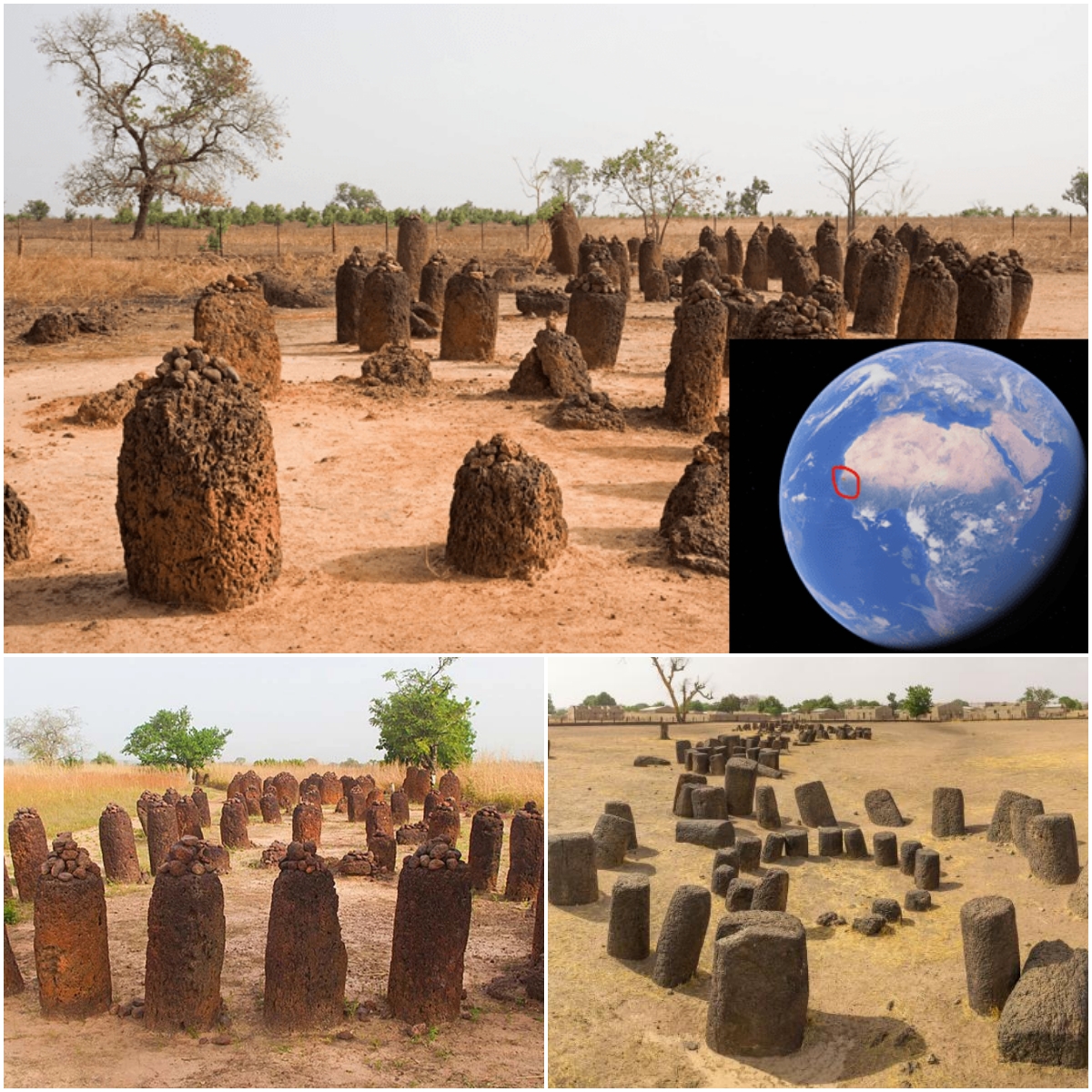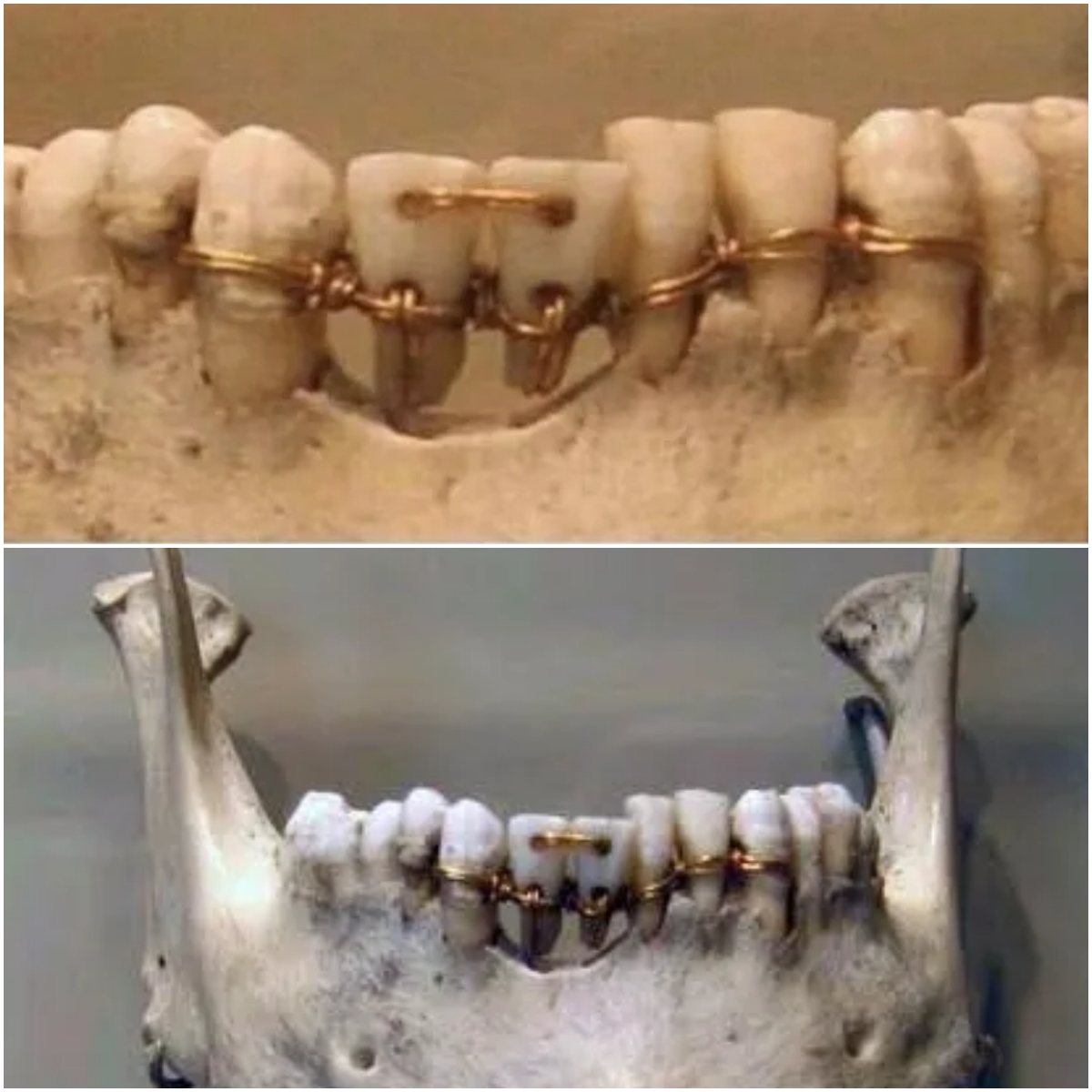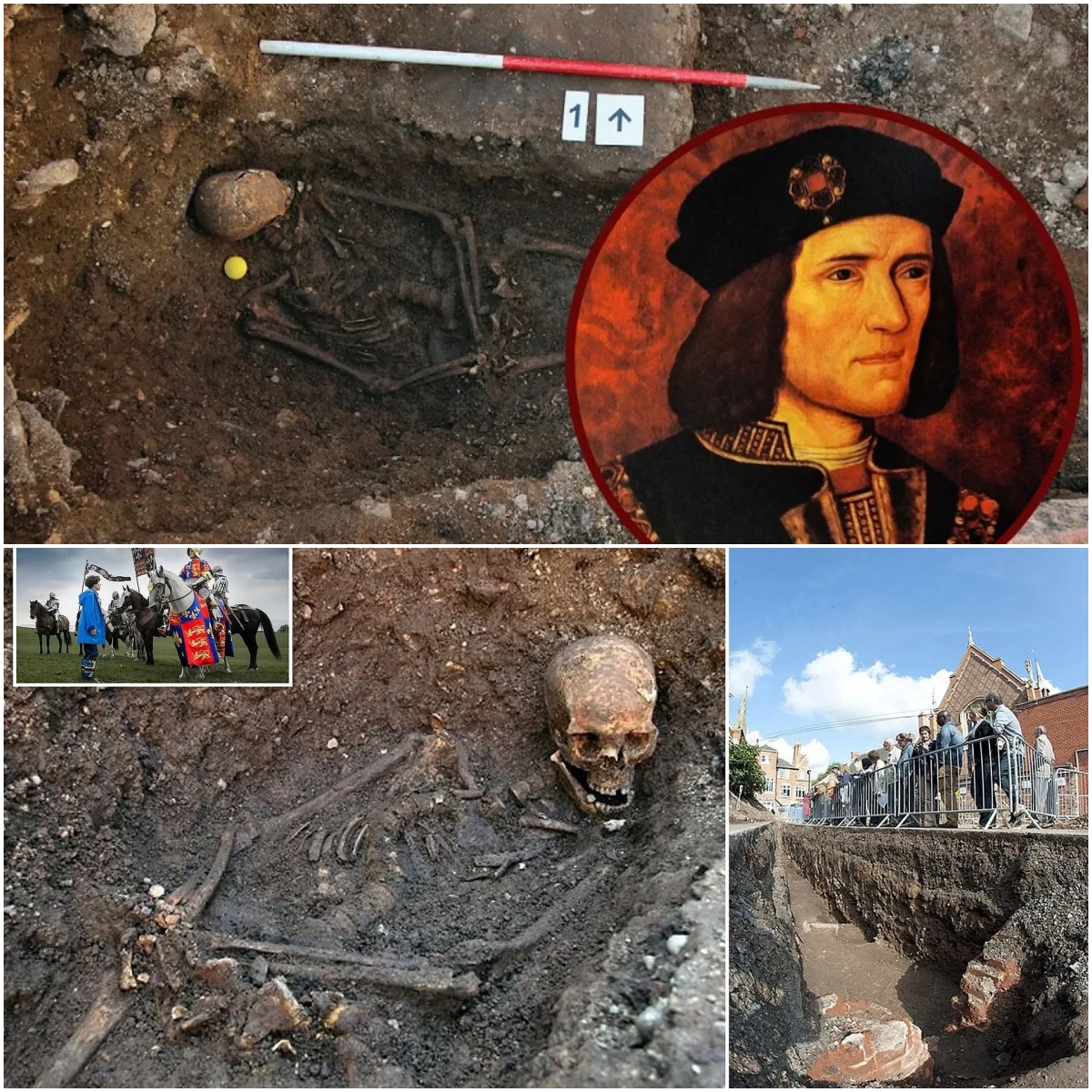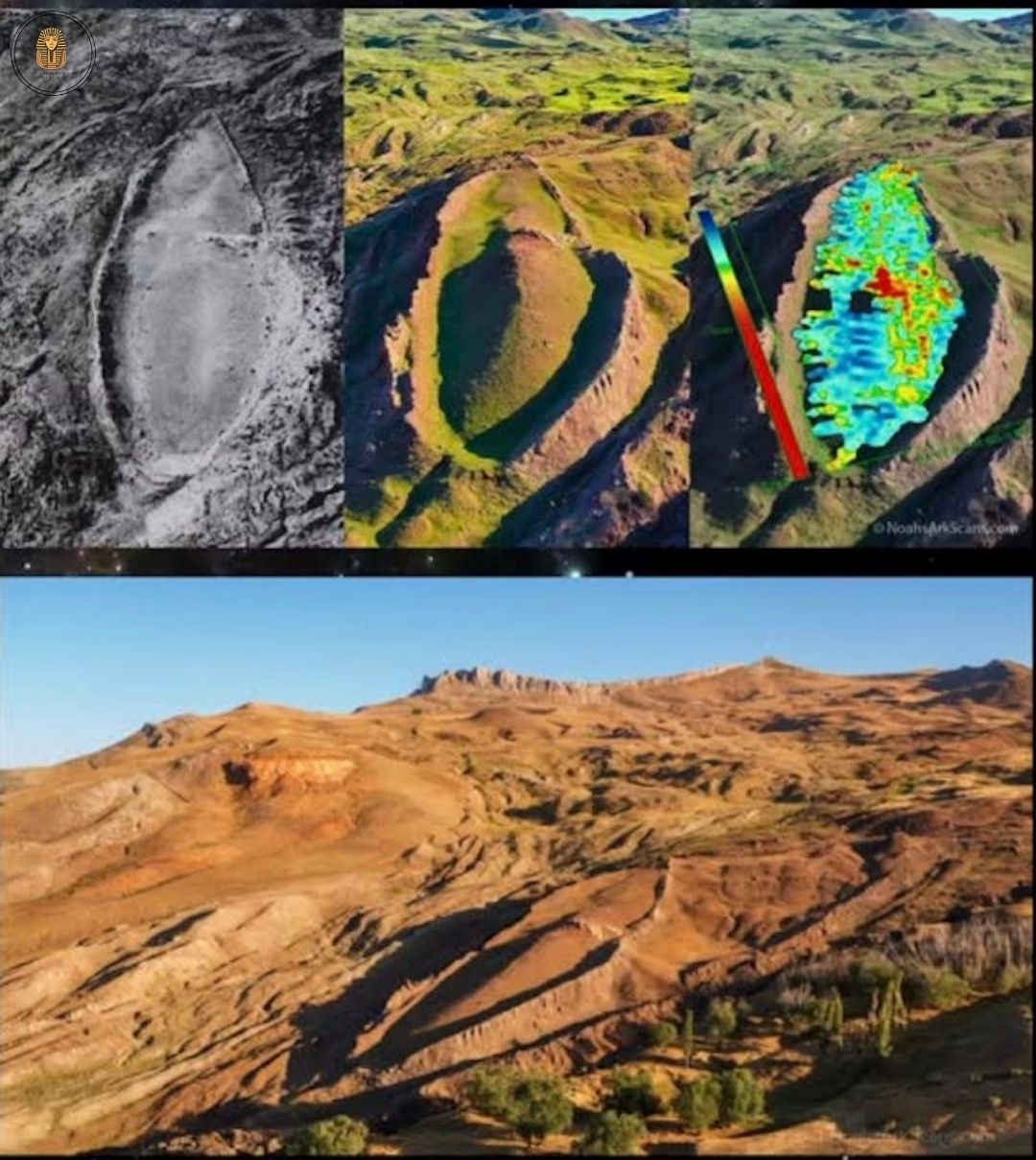36,000-Year-Old Mummified Bison Revealed by Miners in Frozen Alaska
During the Alaskan Gold Rush, miners often uncovered astonishing relics from the past while searching for fortune. As they used high-pressure water jets to wash away frozen silt in pursuit of gold, they occasionally stumbled upon the mummified remains of prehistoric creatures. However, such discoveries were often seen as mere obstacles in their quest for wealth, leading many miners to discard these ancient remnants without much thought. It was only on rare occasions that someone recognized their significance and brought them to the attention of scientists. One such extraordinary event occurred in July of 1979, when a miner working near Fairbanks made an unexpected and remarkable discovery.
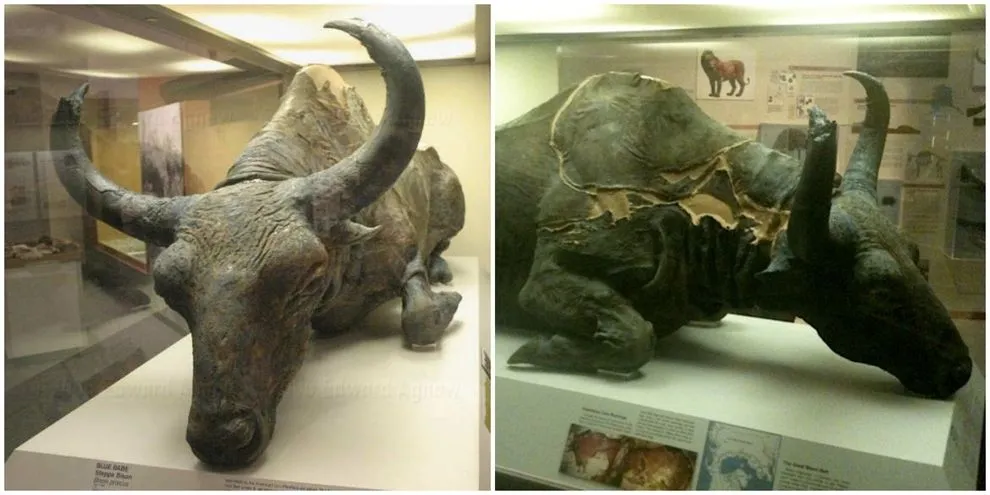
While excavating the permafrost, the miner noticed a pair of bison feet awkwardly protruding from the mud. Unlike many before him, he did not simply brush aside the find but instead alerted others, unwittingly revealing one of the most well-preserved Ice Age specimens ever found. The remains were soon identified as belonging to a mummified Steppe bison (Bison priscus), a species that roamed North America during the Pleistocene epoch. Scientists estimated that the bison had died around 36,000 years ago. Its hide had taken on a distinctive metallic blue sheen due to a chemical reaction with the surrounding minerals, earning it the nickname “Blue Babe.”
The miners, thrilled by their discovery, initially took an unconventional approach to examining their find—they sliced off a piece of the bison’s neck and attempted to cook and eat it. Unfortunately, the meat’s putrid taste quickly dissuaded them from consuming any further portions. This initial misstep, however, did not prevent the bison from being properly studied. Recognizing the potential scientific importance of the find, the miners contacted experts at the University of Alaska. Paleontologist Russell Dale Guthrie was soon dispatched to examine the specimen.
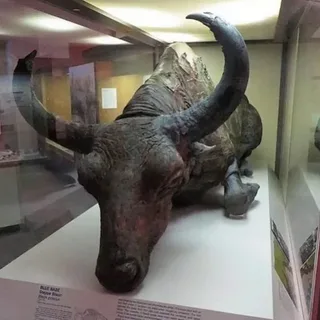
Guthrie and his team quickly realized that Blue Babe was an incredible window into the Ice Age. The remains were in an exceptional state of preservation, with intact horns, skin, and even male genitalia, which helped determine its sex and maturity. The well-preserved state of the carcass was largely due to the frozen ground in which it had been buried. However, the icy conditions also made excavation particularly challenging. The team had to work carefully to extract the specimen while ensuring minimal deterioration from exposure to warmer temperatures. Once removed, Blue Babe was meticulously studied, providing valuable insights into the prehistoric environment of Ice Age Alaska and the creatures that once roamed its vast tundra.
Analysis of Blue Babe’s body revealed evidence of predation. Marks on the bison’s hide suggested that it had likely been attacked by a large Ice Age predator, possibly an American lion or a pack of wolves. The wounds and the positioning of the carcass indicated that the animal had been killed and subsequently frozen in place, preserving it for millennia. Through further study, researchers gleaned important information about the diet, habitat, and behavior of Steppe bison, shedding light on their role in the ancient ecosystem.
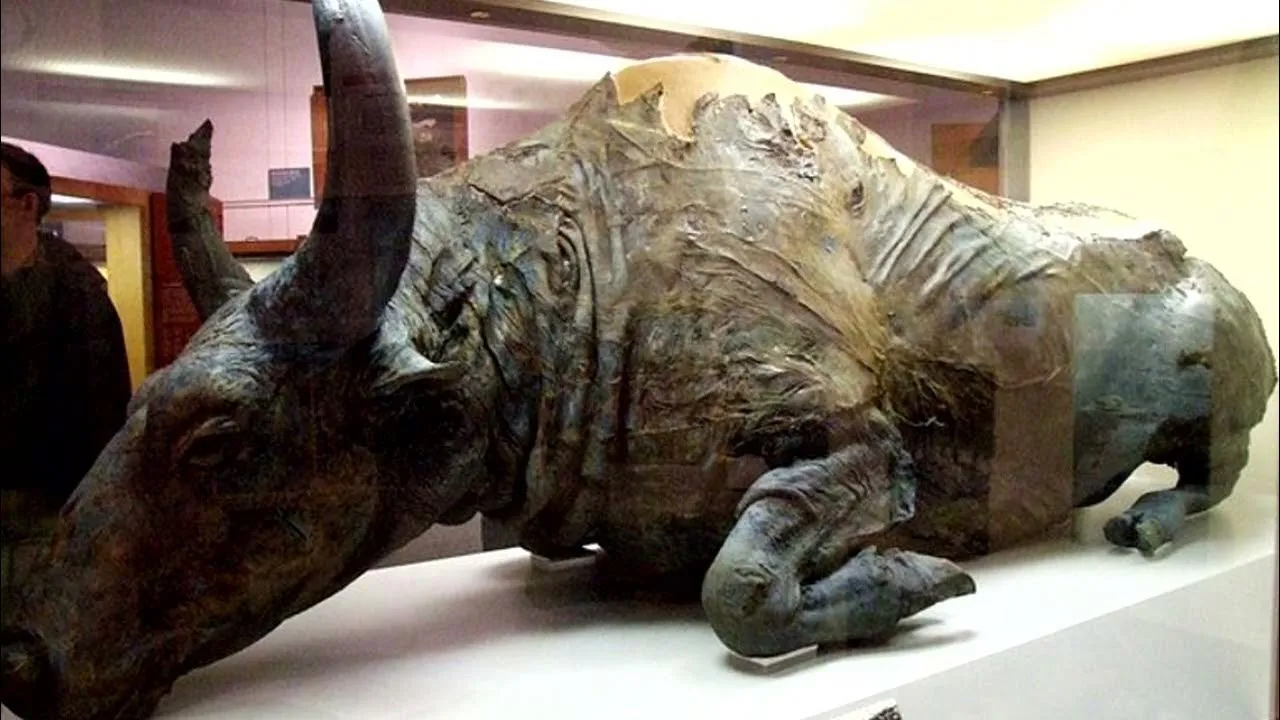
Today, Blue Babe remains one of the most famous Ice Age specimens ever discovered in Alaska. After careful preservation, it was put on display at the University of Alaska Museum, where visitors can marvel at this incredible relic from a time long past. The discovery of Blue Babe serves as a testament to the unpredictable nature of scientific discovery, reminding us that even in the pursuit of gold, some treasures come not in the form of precious metals but in glimpses of Earth’s ancient history.


